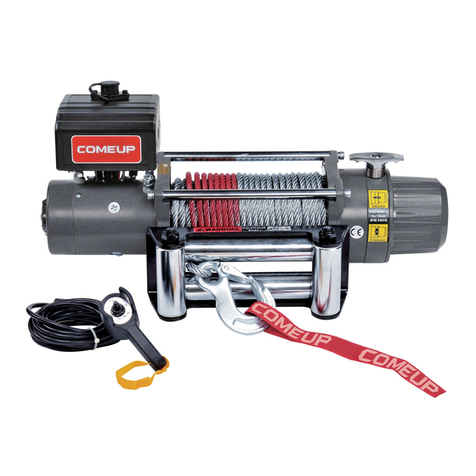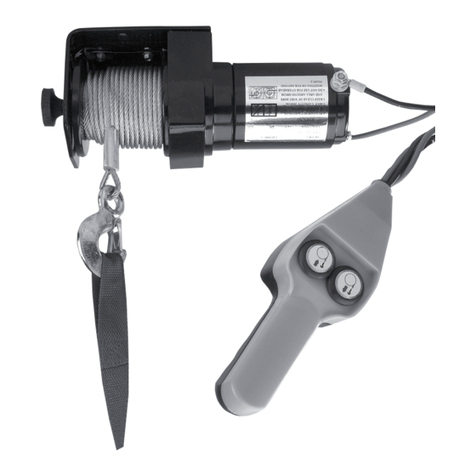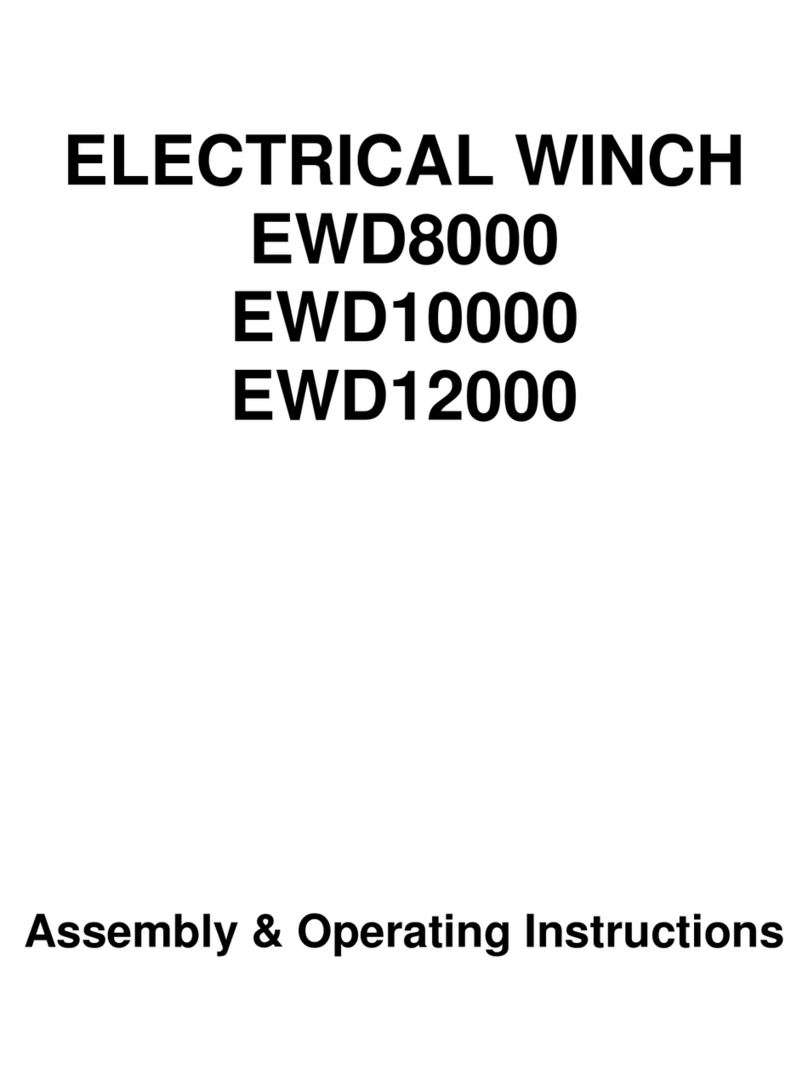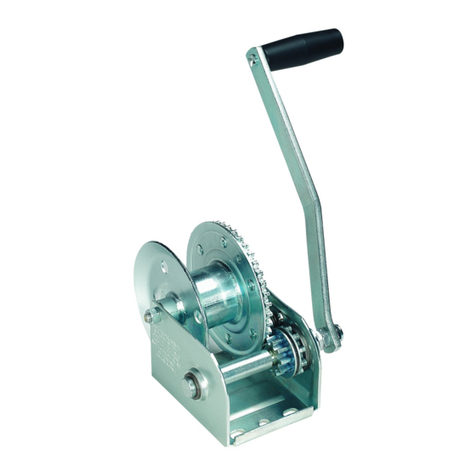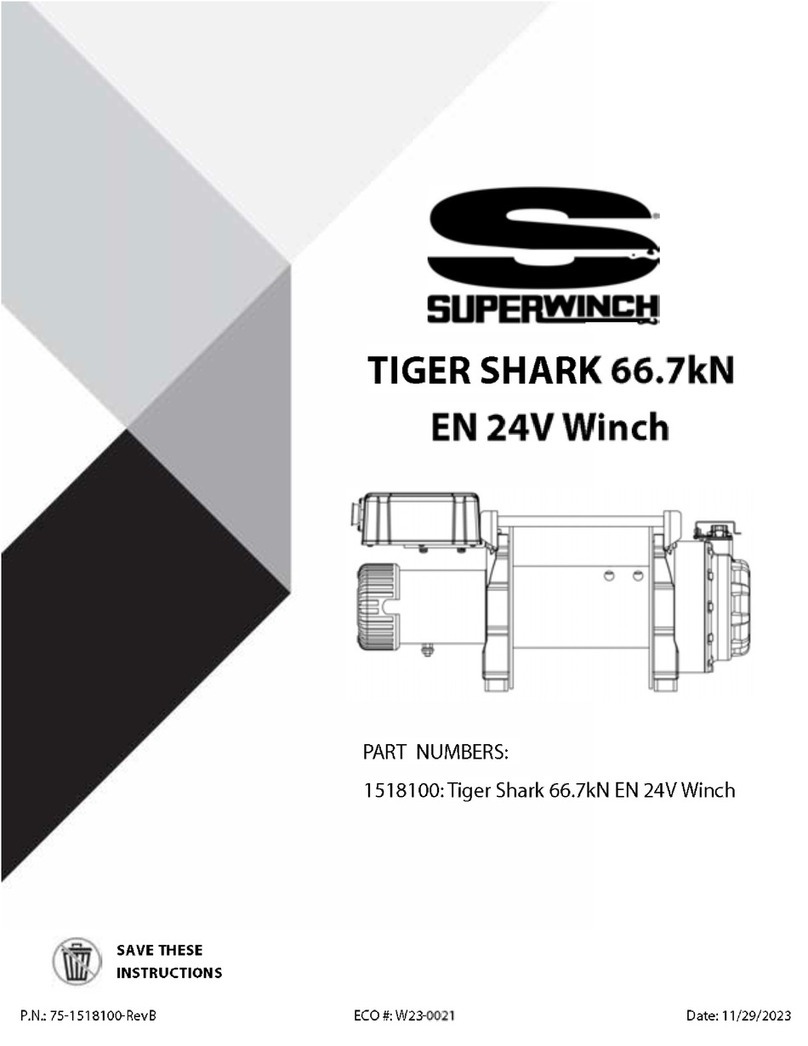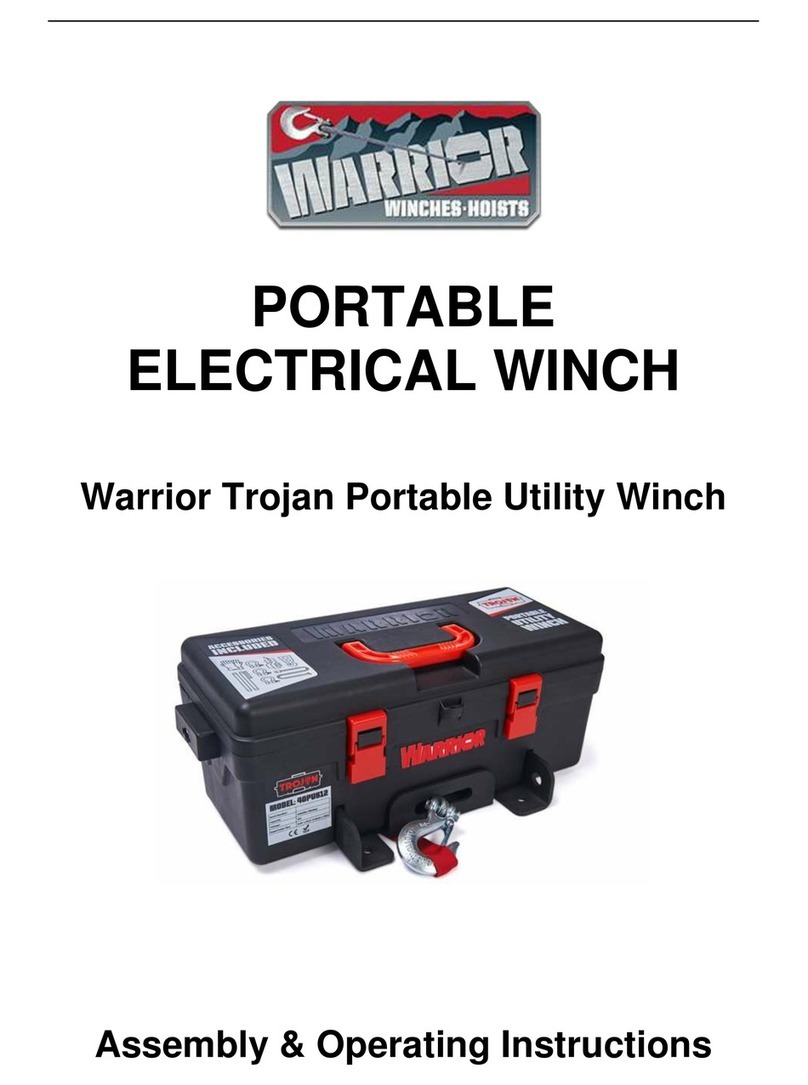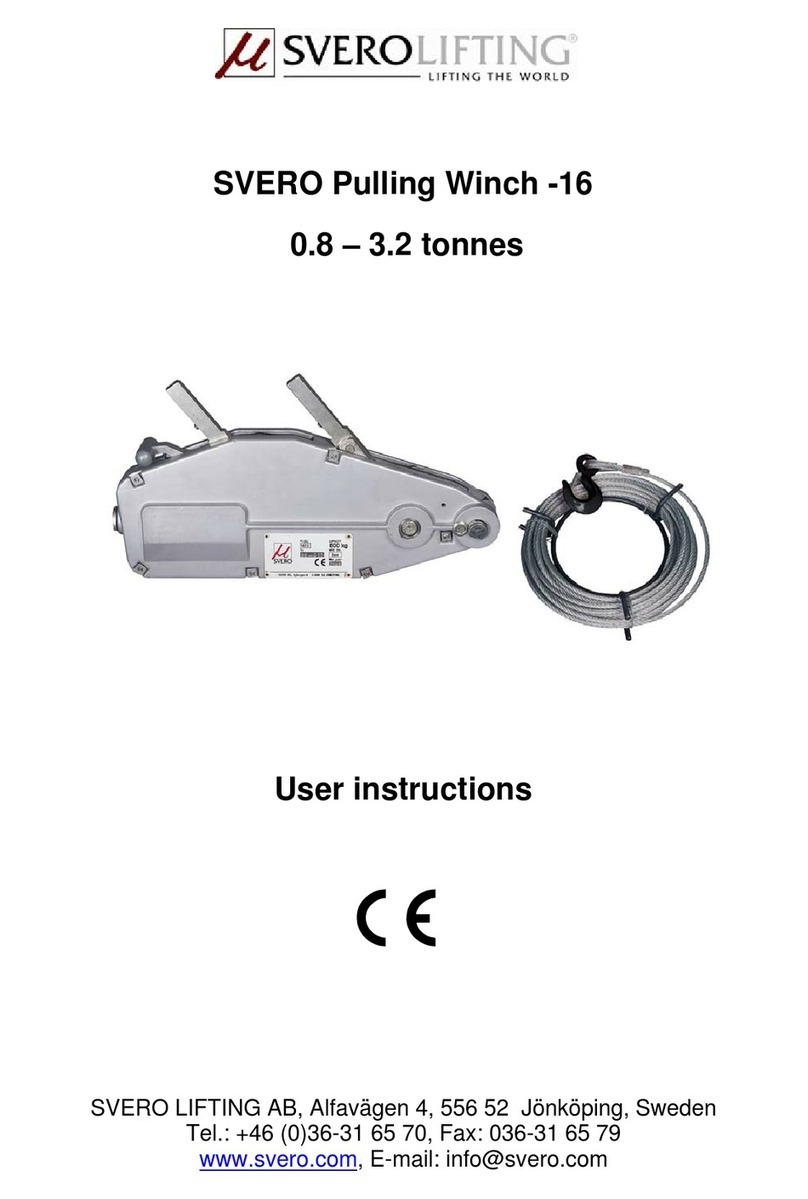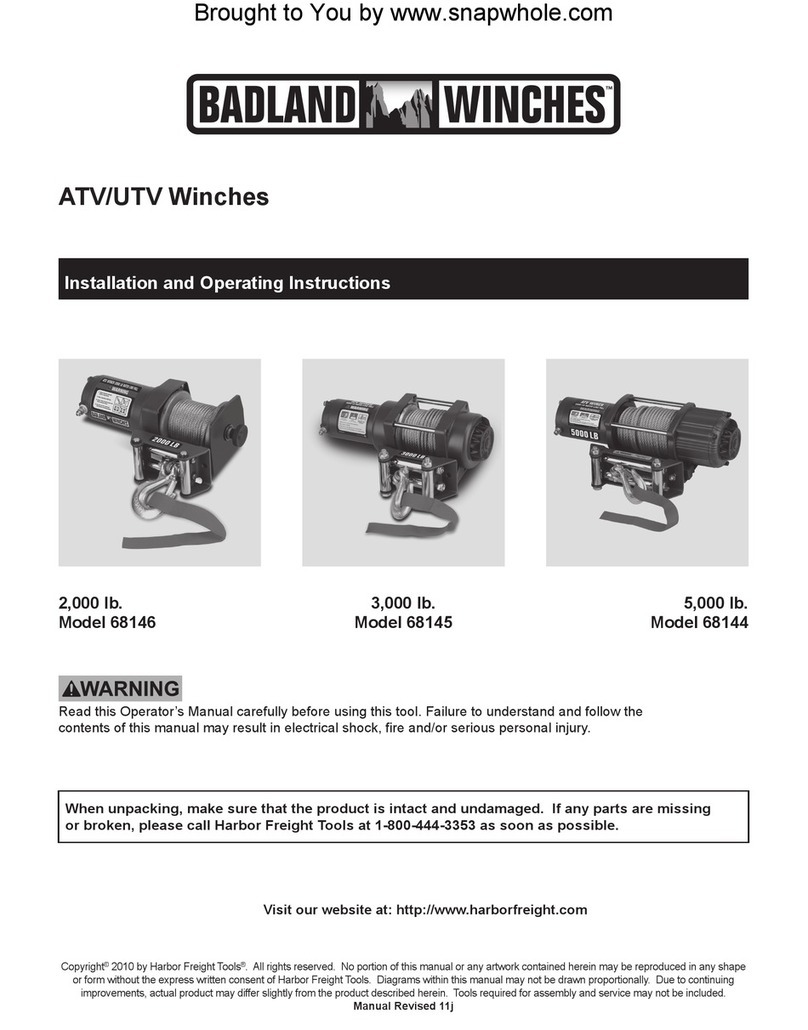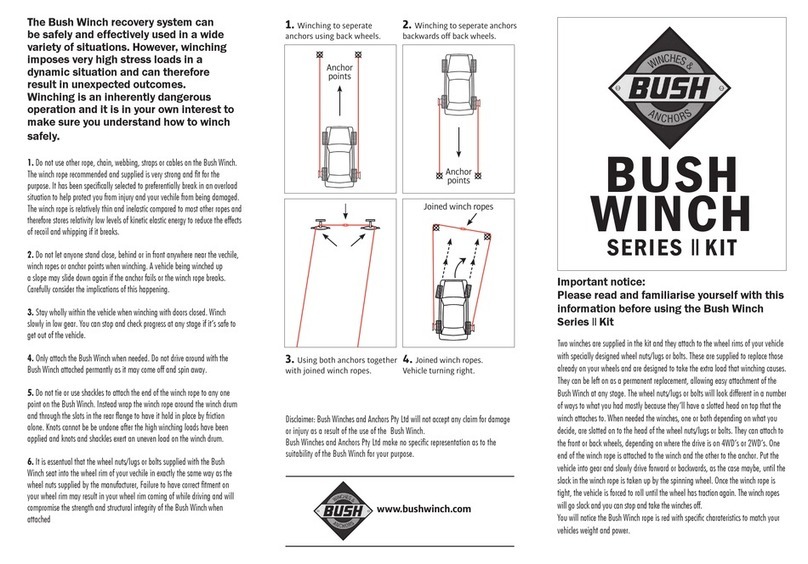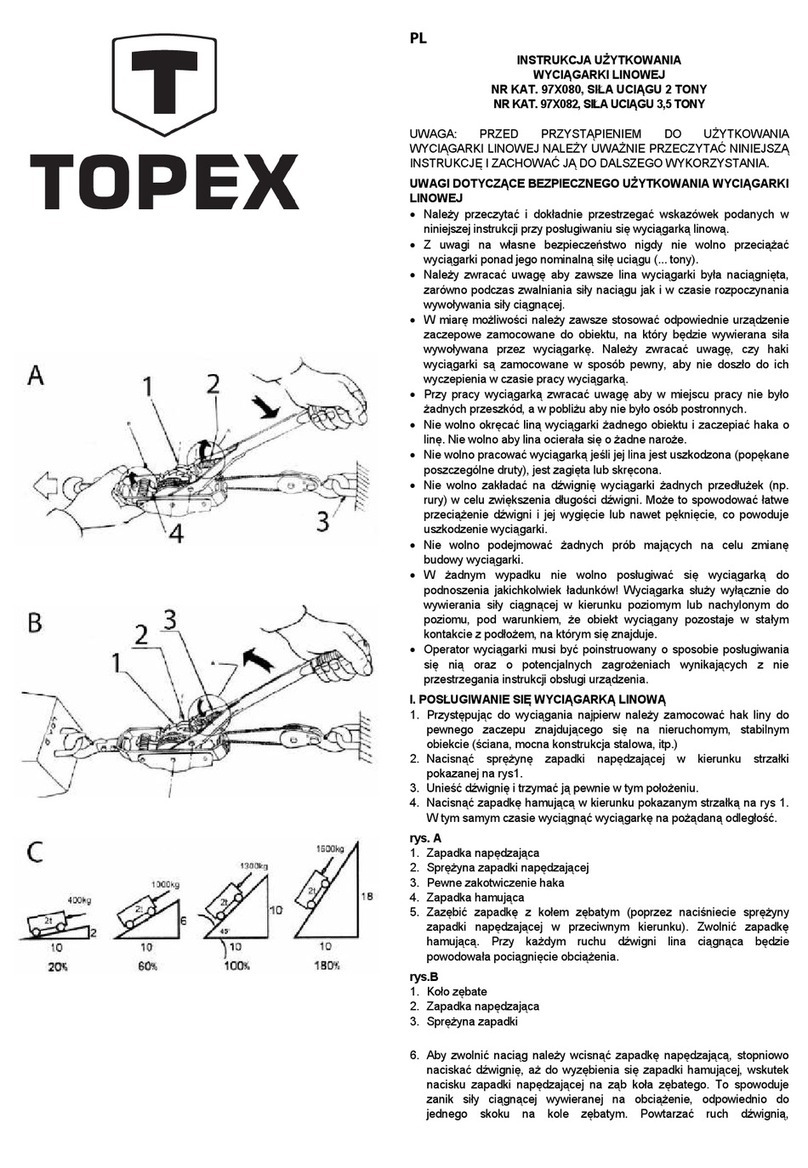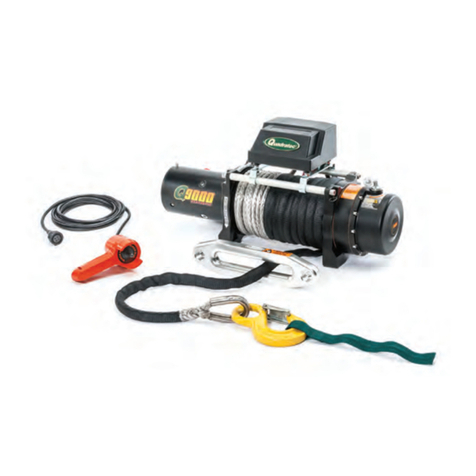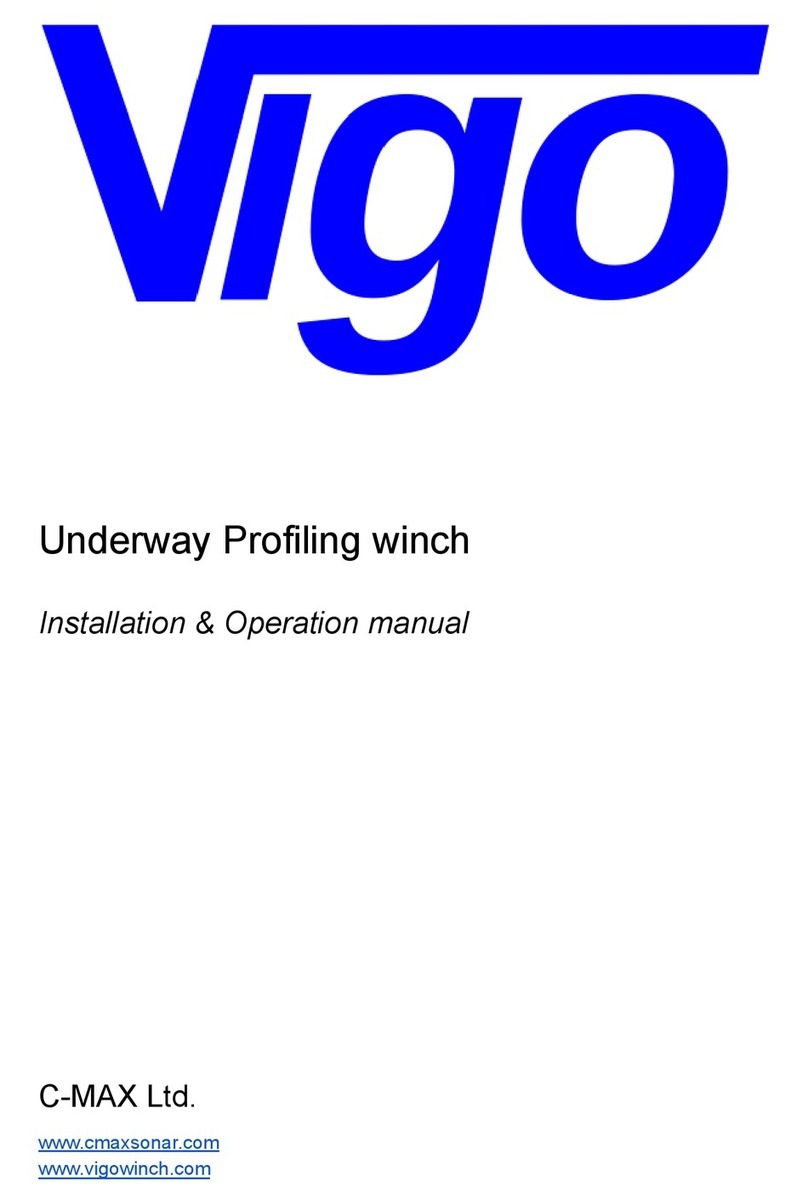
37)Do not operate the winch with any component parts removed, missing or damaged.
38)Do not use or manoeuvre the winch on surfaces or in a position that isunstable and/or
inclined that could result in the winch rolling, sliding or turning over.
39)Do not allow the engine on the winch to run for long periods while the hydraulic circuit is not is
use.
40)The winch must be used in a position that allows good circulation of cooling air around the
engine and winch, do not used in confined spaces.
41)Avoid unnecessary contact with the winch when running, as the engine causes vibration.
42)Avoid using the winch in thunderstorm conditions and/or where there is a risk of lightning,
snow / ice or high winds.
43)The winch must not be used in a potentially explosive atmosphere.
44)The operator must take care not to trip of fall when moving the winch.
45)The operator should monitor the winch for potential problems and hazards when the winch is
in use, these may arise slowly, quickly or suddenly.
46)Stay clear of cables or lines under tension.
47)Only use the machine for its intended purpose.
48)Do not tamper with pressure relief valves or pressure reducing valves.
49)Never operate the winch with the wire rope attached to the anchor hook.
50)When towing always ensure that the rope is fixed securely, this to prevent
uncoiling during transit.
51)If additional front mounted prop is fitted, ensure it is correctly stowed and
secured when towing.
52)Prior to Transit always ensure that the trailer has a positive NoseWeight at the
towing couplingand does not exceed the maximum limit as specified in Section
4.
53)Ensure the nose weight is within the limit of thetowing vehicle.
54)Before towing the trailer, connect breakaway cable to towing attachment on
towing vehicle, ensure that is passes through the hole in the front chassis support bracket,
check the condition, if frayed, kinked or damaged, replace immediately
55)The winch must not be operated until full training and compliance with the directives of this
Operator Instruction Manual and the Operator Instruction Manual for any the equipment to be
used in conjunction with has been fully completed.
